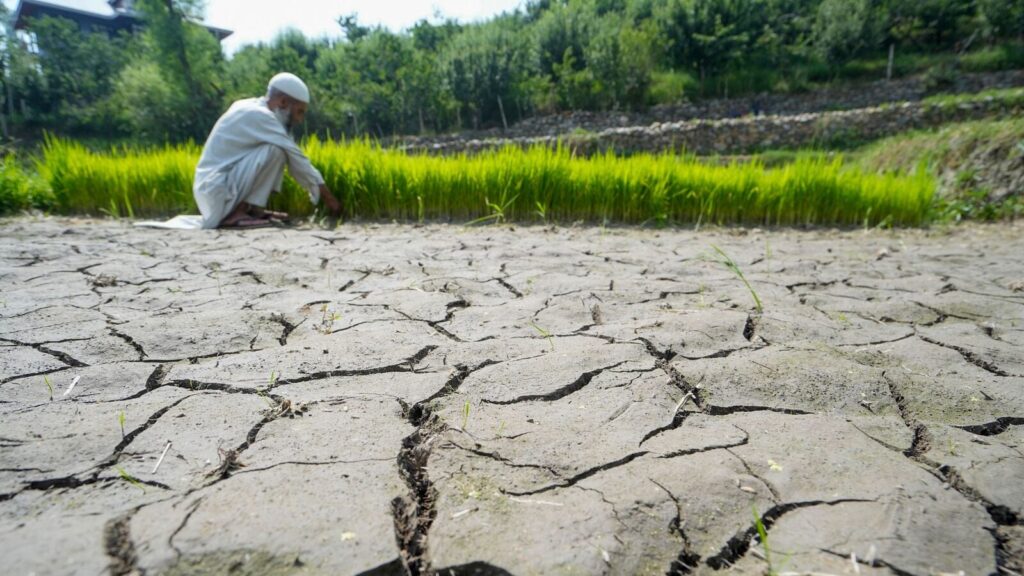The article discusses the significant decline in rice cultivation in Kashmir due to severe droughts, rising temperatures, and failures in irrigation systems. As a result, the area under paddy cultivation has dropped from 163,000 hectares in 1996 to 129,000 hectares by 2022-23—a nearly 21% reduction. Many farmers are shifting to growing apples and vegetables, which require much less water. For instance, it takes 2,500 liters of water to produce a kilogram of rice, while apples need only about 30 liters.
Farmers like Meer in Pulwama are compelled to abandon rice farming out of necessity rather than choice, with apples proving to be a more viable and profitable alternative. This transition is echoed by other farmers who have diversified their crops to include vegetables, resulting in significant income increases.
The climate crisis exacerbates the situation: record-high temperatures and erratic rainfall have devastated traditional farming practices. Experts warn that rice production could fall by over 29% by 2090 unless significant changes are made. Currently, local production meets only about 500,000 quintals of the 900,000 quintals needed annually, forcing reliance on imports.
Challenges such as ineffective irrigation systems, high production costs, and a lack of government support for paddy farming further complicate the issue. Farmers note that current agricultural policies favor high-value crops like apples over rice. Experts argue for a comprehensive policy shift to revitalize rice farming through better marketing, branding, and mechanization to make it economically viable again.
The article emphasizes the cultural significance of rice in Kashmir, particularly in traditional cuisine, and highlights the urgent need for sustainable agricultural practices to maintain food security in the region.
Source link


